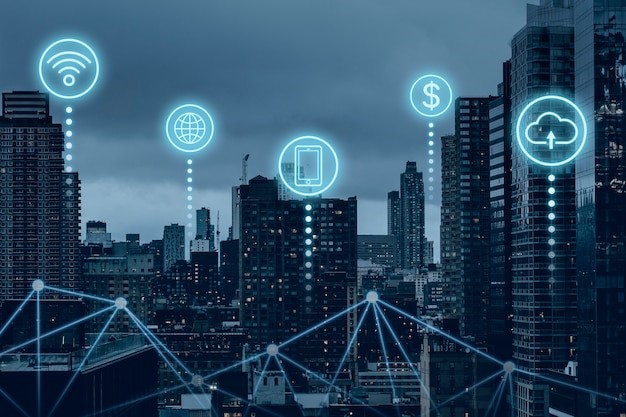Personalized learning has gained significant traction in the field of education over the past few years. Personalized learning tailors educational experiences to each student’s unique needs, interests, and learning styles. Technology plays an essential role in enabling personalized learning initiatives by providing a variety of tools and platforms that facilitate adaptive instruction, data-driven insights, and collaborative learning environments. In this article, we delve into the concept of personalized learning, explore its benefits, discuss key technologies driving its implementation, and address potential challenges and considerations.
Understanding personalized learning
Personalized learning represents a shift from traditional one-size-fits-all educational approaches to a more dynamic and responsive model. It recognizes that students have varying strengths, weaknesses, preferences, and paces of learning. By customizing learning experiences, educators aim to maximize student engagement, motivation, and ultimately, academic outcomes.
At the core of personalized learning are three key components:
1. Individualized Instruction:
Tailoring instructional content, pace, and assessment methods to align with each student’s learning needs and abilities.
2. Data-Driven Decision Making:
Leveraging data analytics and insights to track student progress, identify areas for improvement, and adjust instructional strategies accordingly.
3. Student Agency:
Empowering students to take ownership of their learning journey, set goals, make choices, and collaborate with peers.

Benefits of Personalized Learning
The adoption of personalized learning approaches offers several benefits for both students and educators:
1. Improved Engagement and Motivation:
Customized learning experiences cater to students’ interests and preferences, fostering higher levels of engagement and intrinsic motivation.
2. Enhanced Learning Outcomes:
By addressing individual learning gaps and providing targeted support, personalized learning can lead to improved academic performance and mastery of concepts.
3. Differentiated Instruction:
Teachers can differentiate instruction more effectively, catering to diverse learning styles, abilities, and preferences within a single classroom.
4. Data-Driven Insights:
Access to real-time data and analytics enables educators to make informed decisions, track progress, and identify areas for intervention or enrichment.
5. Empowered Learners:
Personalized learning empowers students to take ownership of their learning, build self-efficacy, and develop critical thinking and problem-solving skills.
Key Technologies Enabling Personalized Learning
Several technologies play a pivotal role in facilitating personalized learning experiences.
1. Learning Management Systems (LMS):
LMS platforms provide a centralized hub for organizing instructional materials, delivering content, assessing student progress, and facilitating communication and collaboration.
2. Adaptive Learning Software:
Adaptive learning platforms use algorithms to dynamically adjust content, pacing, and difficulty levels based on individual student performance and feedback.
3. Data Analytics and Learning Analytics:
Advanced analytics tools help educators analyze student data, track progress, identify learning patterns, and personalize interventions.
4. Educational Apps and Gamification:
Interactive apps, educational games, and gamified learning experiences boost student engagement, motivation, and knowledge retention.
5. Virtual Reality (VR) and Augmented Reality (AR):
Immersive technologies like VR and AR provide experiential learning opportunities, simulations, and virtual field trips, enriching the learning experience.
6. AI-Powered Tutoring Systems:
AI-driven tutoring systems offer personalized support, feedback, and recommendations, supplementing classroom instruction and individualized learning paths.
Challenges and Considerations
While personalized learning holds immense promise, it also presents challenges and considerations.
1. Infrastructure and Access:
Ensuring equitable access to technology and reliable internet connectivity is essential to preventing disparities in access to personalized learning resources.
2. Data Privacy and Security:
To safeguard student data and privacy rights while leveraging data analytics for personalized learning, robust policies, protocols, and cybersecurity measures are required.
3. Teacher Training and Professional Development:
Educators need training and support to effectively implement personalized learning strategies, integrate technology tools, and interpret data insights.
4. Curriculum Design and Content Curation:
Developing personalized learning content that aligns with curriculum standards, learning objectives, and diverse student needs requires careful planning and collaboration.
5. Balancing Automation and Human Interaction:
While technology automates certain aspects of personalized learning, maintaining a balance between automated processes and meaningful human interaction is crucial for fostering supportive learning environments.
Conclusion
Enterprise Systems has adopted a transformative approach to education in the form of personalized learning, which utilizes technology to customize educational experiences based on individual student needs, preferences, and abilities. Educators can employ adaptive instruction, data-driven insights, and collaborative learning environments to enhance student engagement, motivation, and learning outcomes. However, successful implementation requires addressing infrastructure challenges, ensuring data privacy and security, providing ongoing teacher training and support, and designing curricula that align with personalized learning principles. With the continuing evolution of technology, personalized learning holds a tremendous amount of potential for creating educational experiences that are more inclusive, dynamic, and effective across the globe.


Recent Comments